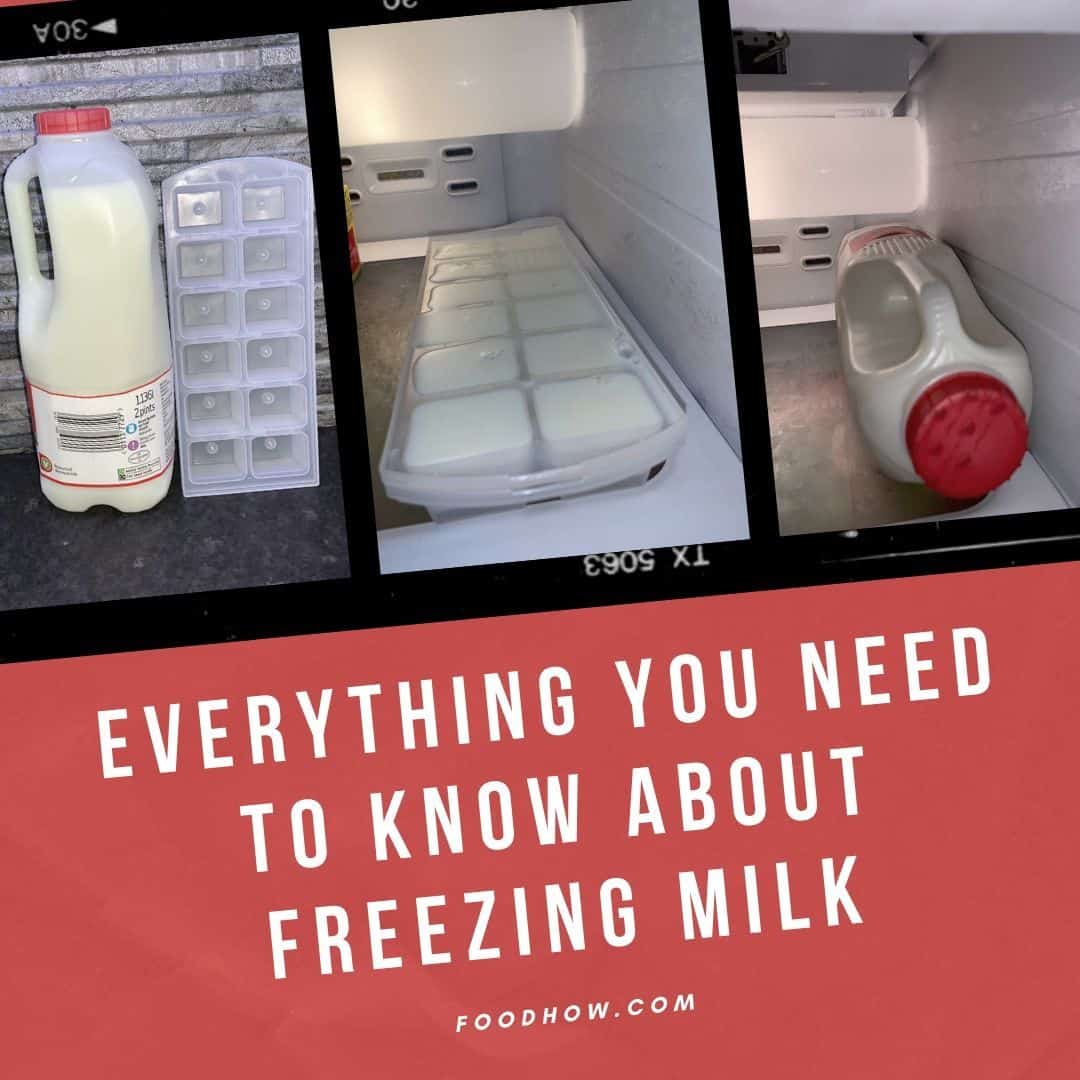
Do you love a glass of ice-cold milk?
If you do, you might have wondered if you could freeze milk in ice cube trays. You might also have wondered about freezing and storing other types of milk like soy, rice, almond, and oat milk. In this article, I’ll look at all the different kinds of milk and whether they can be frozen. When I’m done, you’ll have all the info you need to go crazy with the cold milk!
How To Freeze Any Kind Of Milk In Ice Cube Trays?

Freezing milk in ice cube trays is just as easy as freezing water.
Here are the easy steps:
- Purchase an ice cube tray (or use one you already have).
- Fill each compartment about 3/4 of the way full to give the milk room to expand.
- Put the ice cube tray in the freezer for 3 to 4 hours.
- To prevent the milk from absorbing any odors from other food and make them store longer, you might want to use a covered and airtight ice cube tray or place the tray in the freezer bag.
- Thaw the cubes in the refrigerator or use them directly from the freezer.
- Use the frozen milk cubes just like you would regular ice cubes.
How Does Freezing Affect Different Types Of Milk?

Freezing affects different kinds of milk in different ways. Some milk will remain similar to before it was frozen while other kinds will be very a bit different when they are thawed.
Below is my list of many different types of milk and how they react and change when frozen.
Full Fat Milk
Because it has more fat than skim or semi-skimmed, full-fat milk doesn’t freeze as well. The fat content requires a lower freezing temperature than most household freezers use.
When thawed, the milk will tend to separate from the cream and fat to a small degree, so you should shake it well before drinking. The taste and color could change ever so slightly, but its nutritional value will be the same. [1]
Low-Fat Milk
Low-fat milk will actually freeze better and faster than a full-fat one because it has less fat. Nutritionally speaking, it will be the same after thawing out. It might separate slightly, and the color and texture may be slightly different, but that is barely noticeable. Besides that, it won’t be any different.
Pasteurized/Unpasteurized Milk
There is no real difference between freezing pasteurized or unpasteurized milk. If it is unpasteurized, it will likely be full-fat milk and have the same slight problems that I’ve talked about already. The pasteurization process really doesn’t have any effect when freezing it. Studies in the 1980s did show that there could be a slight decrease in the level of vitamin C when milk is frozen, but it’s negligible.
Full-Fat Cream
Bakers freeze full-fat cream all the time if they have extra. It expands a bit, so you will need a larger container than the amount you have. It also separates like full-fat milk but, nutritionally speaking, it remains the same after thawing. When thawed, you should shake the container very well to re-mix the cream.
Lactose-Free Milk
Lactose-free milk freezes almost exactly the same as fat-free one. It will separate slightly, might discolor, and could taste slightly different, but nutritionally it will stay the same. The texture might become a bit grainy also, but if you use it as ice cubes or for baking or cooking, this shouldn’t be a problem.
Sweetened Condensed Milk
When you freeze sweetened condensed milk, it has a tendency to become much thicker. Most people report that the quality and taste are not affected by freezing. However, it is recommended to freeze it in small batches. I’ve used it, and it does get really thick.
Evaporated Milk
Freezing evaporated milk is not as easy as other types because the solids and liquids separate when it is thawed. Plus, and this is important, no amount of stirring will bring it back to its original texture. Since the texture is what most people want when they purchase evaporated milk (like me) freezing, it isn’t a good idea. On the other hand, if it will be used in a recipe where the texture won’t be noticed, freezing evaporated milk is fine.
Goat Milk
Freezing goat milk is perfectly fine, but it is recommended to freeze it as fast as possible. It will separate when frozen if not done very quickly, and sometimes you will see a kind of ‘sludge’ at the bottom of the container after it is thawed.
Also, you might see small flecks of cream floating on the surface. This is normal and not a problem.
Freezing Non-Dairy Milk
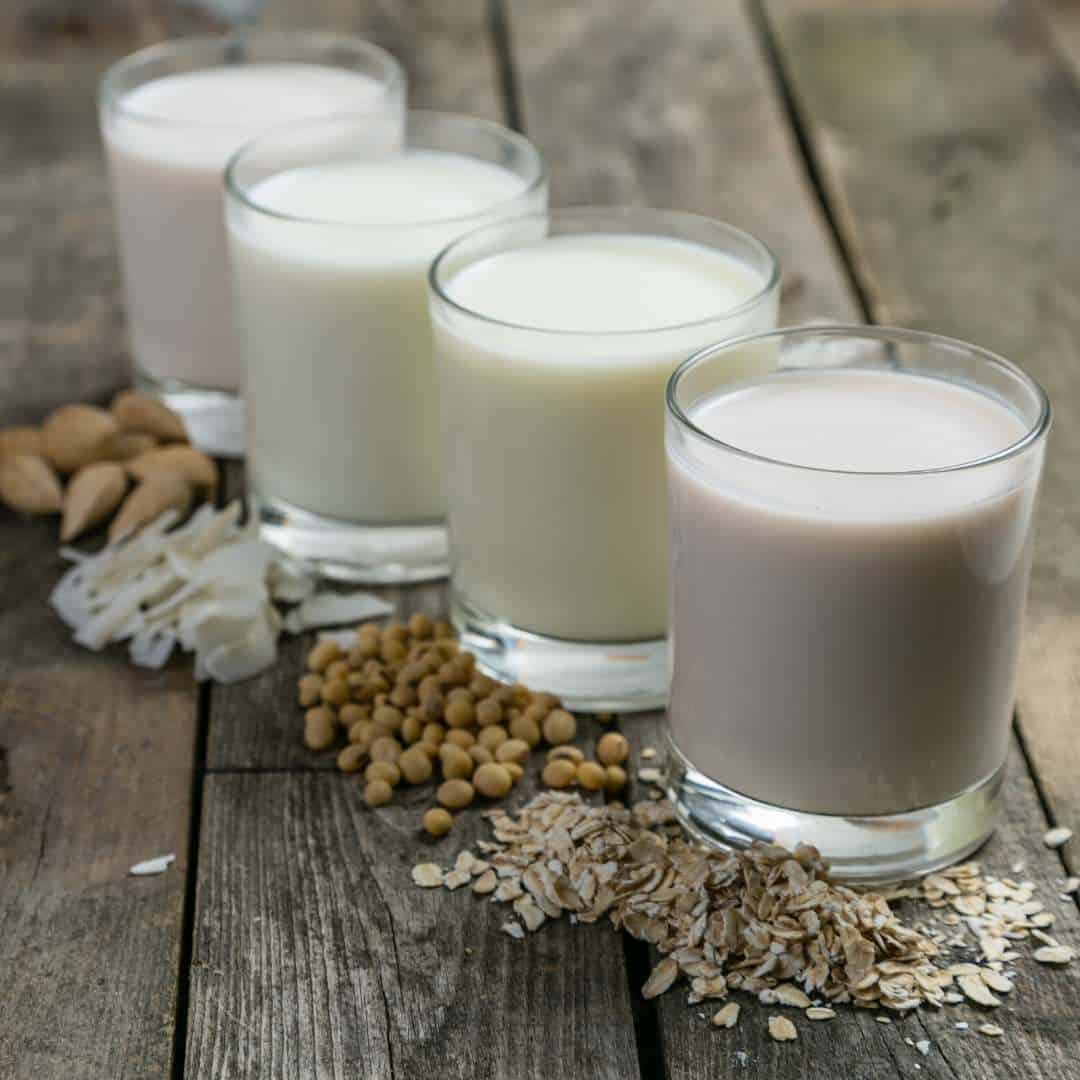
Almond
Most manufacturers recommend that you do not freeze almond milk because it will significantly change the texture and taste. The nutritional value won’t change, but the milk will separate and become watery.
If you’re going to use almond milk in smoothies, you probably won’t notice the difference. (I know I don’t.)
Coconut
When you freeze coconut milk, it gets grainy and becomes much thinner. Sometimes a denser layer will form on top. Like many of the other kinds of milk I’ve already talked about, you should mix it well after thawing. The nutritional value will stay the same. Some people drink straight coconut milk after it’s been frozen, but most use frozen cubes in smoothies.
Soy
The texture and flavor of soy milk will be affected by freezing but not the vitamins, minerals, and other nutritional factors. Soy milk will also change in color slightly and be a bit grainy. Like the other kinds of milk on this list, using soy milk in smoothies, recipes, or desserts will be just fine after it’s been frozen. You won’t notice the texture or taste differences.
Oat
Like some of the others on this list, oat milk will become grainy after it is thawed. Besides that, it doesn’t change all that much.
Flax
Freezing flax milk will not generally affect its flavor, texture, or color. Nutritionally, it will also remain the same after thawing. In some instances, it might separate after freezing. Still, if you use it in a smoothie or for cooking, this won’t be noticeable.
Rice
Rice milk is one of the best types to freeze because the consistency and flavor stay pretty much the same after it is thawed out. (I freeze my rice milk all the time!) It might separate slightly after defrosting, but if you use frozen cubes or shake it up well after defrosting, you won’t notice the difference.
How Long Can Milk Be Frozen Before It Goes Bad?
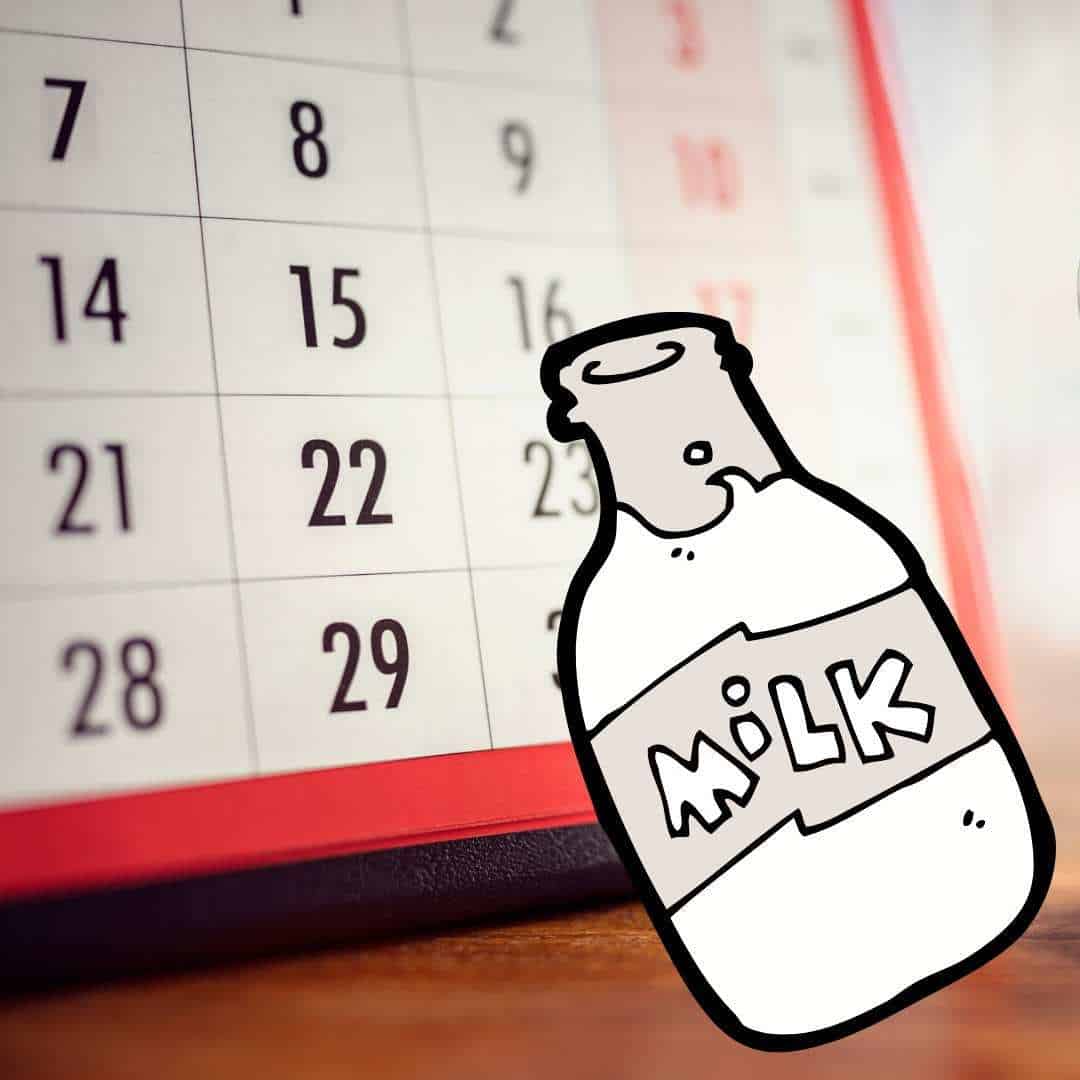
You can safely freeze milk, whether dairy or non-dairy, in your freezer for up to six months. When used for drinking, then it is recommended to use it within one month of freezing. If you are planning to cook or bake with it, then storing it in the freezer for up to six months is perfectly fine.
For long-term storage in the freezer, food products should be kept at or below 0° F (-18° C).
Use a storage label and write the date on it when it was frozen.
Make sure that it is well protected and kept frozen solid all the time. If you make cubes from it in an ice cube tray, use one that has a top that seals well, or place the ice cube trays in the sealed freezer bags.
Also, make sure it has not gone past the expiration or “best by” date before you put it in the freezer.
If you have stored milk in the freezer for more than six months and even though it still looks and smells OK, always boil it before use.
Does Freezing Milk Change The Taste?
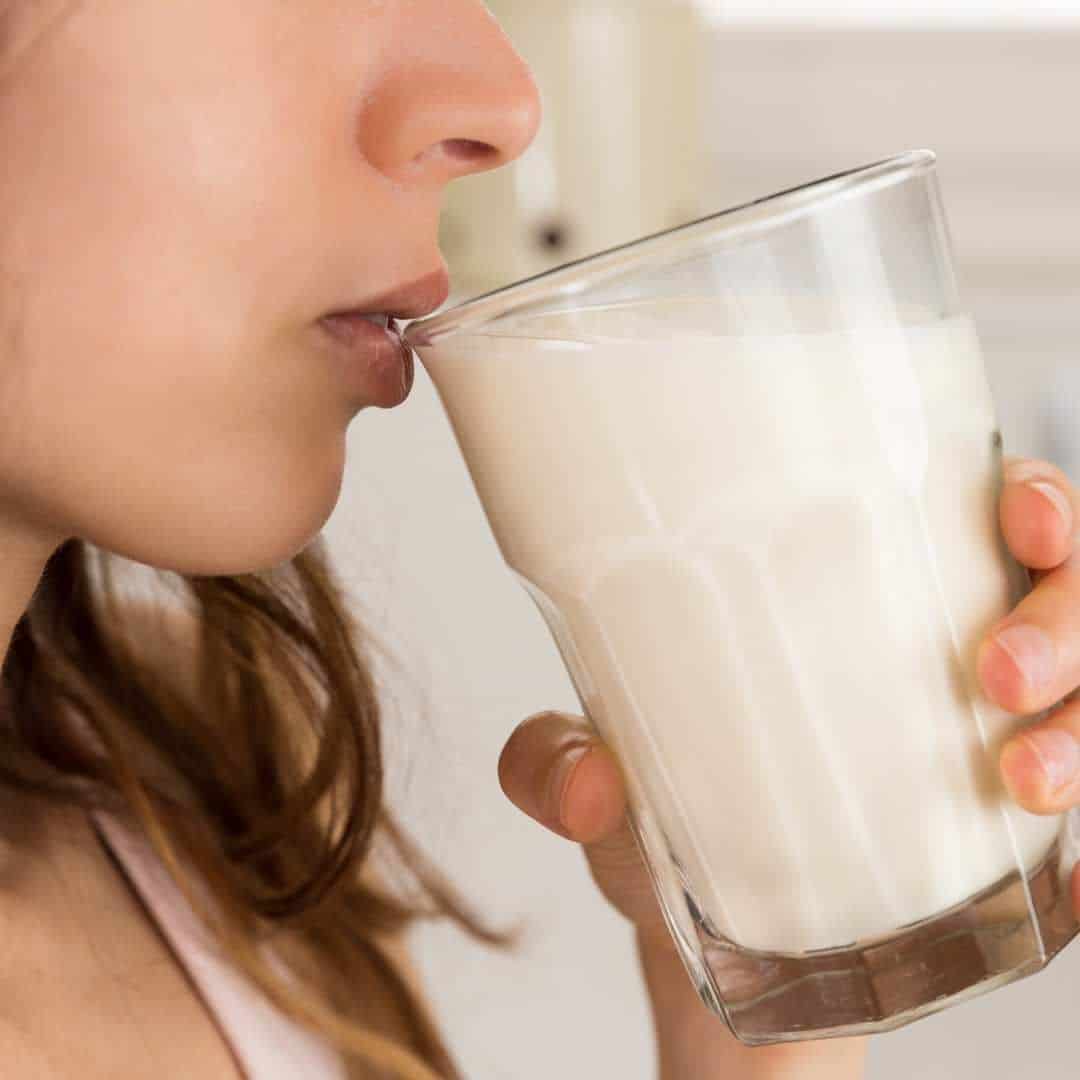
For most of the different types of milk on this list, the answer would be no. Freezing won’t really affect the taste of milk. However, some will change ever so slightly, and many will have a different texture and consistency after being frozen. Some will also change color slightly.
I use almost every milk on this list from time to time and have frozen almost all of them. I can tell you that the changes are minimal at most. Truth be told. However, I use most in smoothies or for cooking and baking, so it would be hard for me to tell if there was a small difference.
Before you stock up your freezer full of milk cartons, try to freeze a small amount (like an ice cube tray) and see if you like its test.
Related article: Do you really need to keep mayonnaise in the fridge?
Here Are a Few Different Ways To Use These Frozen Cubes.
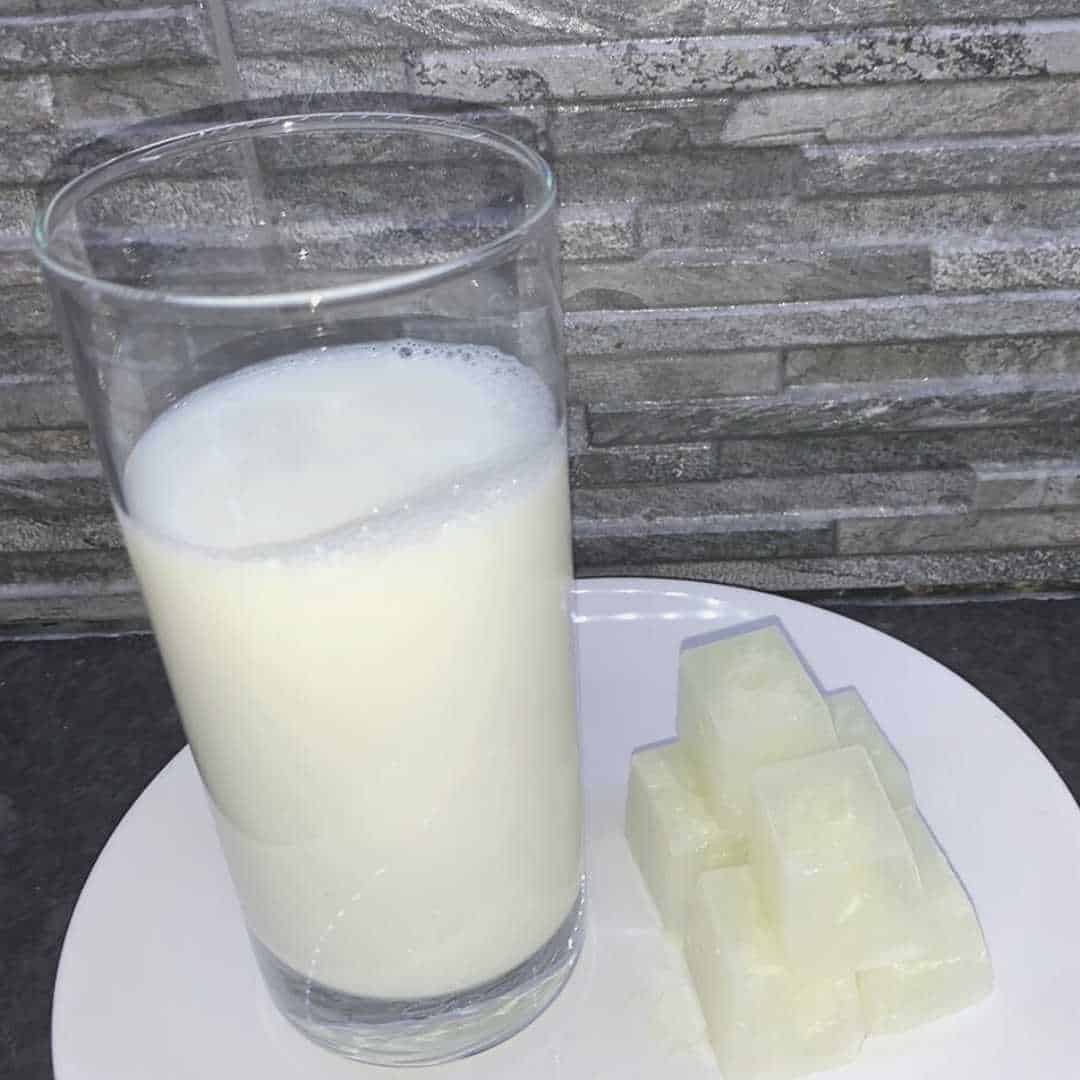
There is a lot of fun and interesting ways to use these frozen cubes. I freeze milk in ice cube trays all the time and add stuff for myself and for my children.
I’ve made a list of some of the best below.
- Use them in smoothies directly from the freezer.
- Use them for cooling hot drinks.
- Add them to protein shakes.
- Make chocolate milk cubes.
- Put it in the sippy cups for kids.
- Use them in cereal to keep your milk cold while you eat.
- Use them for baking pastries when the dough needs to be kept cold.
- Plop them in a glass of milk to keep them cold longer.
- Put some in your iced coffee or tea.
- Use them in cooking when you need a specific portion size.
- Rub one on your face to shrink your pores.
- Give one to your cat on a hot day.
What Is The Serving Size Of One Average Milk Ice Cube?
If you want to use your milk ice cubes for cooking, knowing their serving size can be very helpful. Remember that this is for a standard-size ice cube tray filled to the top. Also, 1 cube is about 2 tablespoons.
- 2 Cubes = 1/4 cup
- 4 Cubes = 1/2 cup
- 6 Cubes = 3/4 cup
- 8 Cubes = 1 cup
Can You Freeze Milk In Its Original Paper, Plastic or Glass Container?

Pour out half a cup from the container to leave about 1 1/2 inches of head space for the liquid to expand.
Yes, you can, but you need to be aware that, like any liquid, milk will expand when it is frozen. Make sure that the container has enough space for that expansion, especially glass containers. Plastic containers are usually strong enough and somewhat flexible and will be fine. I don’t recommend freezing milk in paper cartons. (See the next Tip.)
Tips For Freezing Milk In The Carton

One of the problems with freezing milk in a paper carton is that they are not very airtight and not that strong. For the best long-term storage and to prevent any leakage or contamination, save some clean plastic milk jugs (with their lids) and freeze your milk in those.
I highly recommend plastic containers over paper cartons and glass bottles, as you might end up with a shattered bottle.
Related article: 11 Simple Tips To Keep Dairy Products Safe In A Hot Car.
Best Ways To Thaw Milk
The safest way to thaw milk is to put it in the refrigerator and let it defrost naturally over a few hours. For faster defrosting, place the frozen carton in a bucket of cold water for 30-40 min. After 40 minutes, press on the sides of the carton to check if the frozen milk is breaking and is defrosted enough to be able to use it.
I have tried microwaving milk cubes, as well as the whole frozen-solid container, and it works. Still, I really don’t like microwaving things in plastic.
However, if you really do want to defrost it in the microwave, then make sure it is in the microwave-safe container. Place it in the microwave for 2-3 minutes, then take it out of the microwave give it a good shake, and repeat the process till it is defrosted enough.
Unfortunately, the problem with most containers or even ice-cube trays is that they do not state if they are microwave-safe or not. That is why I would not recommend defrosting milk in the microwave.
Should You Freeze Milk Twice?
In almost all cases, the answer to this question is no. Every time you thaw something out from being frozen, the number of bacteria and germs increases. Freezing it again increases that number a lot and also increases the chance that you will get sick. Also, freezing it again will definitely change the texture and consistency.
Check out how to safely store other dairy products. How To Store Butter The Right Way – Keep It Safe & Fresh Longer.

